The following essay by El Inglés is the first in a six-part series that examines the sociopolitical effects of mass immigration into the Western democracies. The author uses a simplified statistical model with graphs of examples to demonstrate the inevitability of a breakdown in the social contract wherever a sufficient number of immigrants from alien cultures are imported into a previously homogeneous society.

Ethno-Religious Diversity and the Limits of Democracy
by El Inglés
Part One: An Outline of the Model
Introduction
In this document, we present a conceptual model for understanding and predicting the effects that ethnic and religious diversity must have on the ability of democratic government to deliver what are widely considered to be its natural fruits: political stability, civil order, and harmonious relationships between different groups in a society. We do not mean to imply by this that democracy is, or is thought of as being, a panacea for all ills in a polity, nor that no such desirable states of affairs can exist at any time in non-democratic polities. We simply make the unremarkable observation that systems that allow the formation of governments strongly reflective of the political desires of the people of a country are often thought, with some justification, to be more likely to produce these fruits than systems that produce governments unreflective of these desires.
This claim notwithstanding, we will argue that democracy, being a mechanism for achieving a certain end under certain circumstances, suffers from the same fundamental problems as any other mechanism devised by man, to wit, that it is finite in its potency and that, exposed to stresses that it was not designed to deal with, it will fail. This failure can be sudden or protracted, but it will certainly occur eventually when the stresses exceed its ability to withstand them, just as a column will buckle or a beam will snap when the loads they are required to bear become too great.
This document consists of two main parts. In the first, we will develop our model and lay out the core ideas that underlie it. In the second, we will attempt to apply the model to our own country, Britain. We will then offer a few concluding thoughts.
Part 1: Outline of the Model
We commence by pointing out that human beings’ political desires can be very complex, as complex as the political world itself. Even a brief, off-the-cuff list of those matters that exercise human beings politically could quickly become rather long: the minimum wage, environmental policy, immigration, the size of the military, state control of utilities, and gun control all spring quickly to mind, not to mention abortion, state regulation of the economy, diplomatic relations, tax rates, housing, education, and healthcare. The entries in this initial list could themselves be furthered refined, parsed, quibbled over, and the relationships between them discussed ad infinitum. Diplomacy and the military are hardly unrelated, nor are tax rates and the size of the healthcare system. To all intents and purposes, the variety of political beliefs a person can hold is infinitely large.
Nonetheless, as all those who would attempt to model and understand complex phenomena understand, whatever field they work in, a great deal of the complexity of the real world must be stripped away and discarded if one wishes to model phenomena of interest within it. One must pull away and remove that which is non-essential, that which is not determinative with respect to the key characteristics and behaviours of the system, and retain that which is. In this document, we attempt to do just this in the context of democratic political systems, particularly those undergoing or likely to undergo political polarization as a consequence of ever-greater ethnic diversity.
Let us begin by stipulating that we aim to construct an imaginary 100-dimensional space in which every single member of the electorate in a given democratic polity is represented by a single point. Dimension 1 represents their attitudes towards foxhunting, Dimension 2 their beliefs with respect to the NHS, dimension 3 their position on the importance of the Royal Navy, and so forth. We have now distilled all the political complexities of the UK down to 100 variables varying continuously between 0 and 10, so all positions are now simple linear values of certain variables. If one believes that funding the Royal Navy is categorically more important than anything else in UK political life, then one’s Navy variable is 10. If one believes the Royal Navy should be disbanded with all haste, then one’s Navy variable is 0. One’s opinion on the new aircraft carriers commissioned by the Navy does not have an independent existence in this model, it is simply wrapped up somehow in one’s Navy variable, which is to say it is part of the complexity we have discarded.
We said above that all members of the electorate are now points in 100-dimensional space. Talk of more than three dimensions may well come across as being opaque or even meaningless. However, in this and similar contexts, the term 100-dimensional space has a straightforward meaning. Consider a 2-dimensional space with two points on it:
We understand intuitively that this is a two-dimensional space, but do not perhaps appreciate that this means a point within this space needs two, and only two pieces of information to describe it: an x-coordinate and a y-coordinate. Once we know these two pieces of information, we know exactly where the point is, and, because it has no attributes other than its position, we know everything about it.
In a three-dimensional space, a point is defined by three pieces of information: an x-coordinate, a y-coordinate, and a z-coordinate. Again, we recognize this intuitively when we see a 3D chart on the page or the screen. What about a four-dimensional point? Does the same apply to it? Many would complain that they cannot visualize a point in four-dimensional space, but it is important to understand that our ability to visualize it has no bearing on the coherence of the underlying concept.
Medical researchers might need to characterize people as, for example, four-dimensional entities, which is to say as entities described by four variables. Imagine a team of researchers investigating resting pulse rates in men over the age of 60, who are described by four variables: age (60 and upwards), height, weight, and resting pulse rate. As far as the model constructed by the researchers is concerned, these are the only four ways in which these men can vary. Everything else is either fixed (their sex), or irrelevant (their taste in music). This is a decision made by the researchers who build the model, as to what was important to know and what was not. Drawing a graph and positioning these men on it as four-dimensional points would not be possible, as we cannot depict a four-dimensional space. But there is nothing complex about the notion that there are four ways in which they can vary from one another, all of which information could be written down in a simple table.
Going back to our 100-dimensional space, we can now see that it is simply that conceptual space in which 100-dimensional entities are to be found, entities defined by us on the basis of our 100 variables. If we had the eyes to see this space and the points contained therein as clearly as we can see two-dimensional space, we would undoubtedly see patterns similar to those we tend to see in scatter plots for other phenomena. Some areas of the space would have concentrations of points, some none or virtually none, and others would have moderate densities of points. We would likely see that those who placed great value on the monarchy also tended to believe in funding the military generously, and that those who were opposed to foxhunting believed in funding it rather less generously. Irrespective of the accuracy of these two specific claims, it is surely clear that certain political beliefs tend to correlate with each other, in that people holding one belief are likely to hold certain other specific beliefs as well.
Scholars seeking to model more rigorously the phenomena we discuss in this essay could create sophisticated computer models to keep track of many different variables for each elector in the model. Here we must discard nearly all of this complexity for two reasons: firstly, we cannot, given our limitations, and the limitations of this project, deal with 100 different variables, or even ten different variables, and secondly, we could not represent these models visually even if we could create them. As such, we are forced to discard 98 of the 100 dimensions that describe an individual politically in our system, and leave the remaining two undefined. They represent political diversity, but only the political diversity we ascribe to them in the context of particular diagrams and discussions. They do not represent left-wing vs. right-wing, authoritarian vs. libertarian or any other axis of political variation we might imagine, unless we define them as representing these positions in any given context.
Having reduced our system to a two-dimensional one, we can represent it visually with confidence, in a way we could not even in three dimensions. A brief look at a representative selection of three-dimensional scatter plots will make it clear that they are deeply imperfect representations of the phenomena they purport to depict. The best of them are at least somewhat confusing, the worst of them not remotely meaningful, apparently as a function of the density of points, the degree of overlap of separate points, and the specific graphic style used. For this reason, we use simple two-dimensional political spaces. As they depict specific polities (even if the polities are purely hypothetical) that can be considered systems of interacting parts, we will refer to them as system diagrams. All the system diagrams depicted in this essay will be shown to the same scale, so they can be directly compared with each other. They will be squares, with two undefined axes of variation, one vertical, one horizontal.
Simple Systems Diagrams and Their Analyses
Each standard system diagram will have on it a cross, which we shall call the Policy Point (PP). This point represents the suite of policies actually being implemented by a government at any point in time. It is itself a point in 100-dimensional space, collapsed down into two-dimensional space for the purposes of simplicity and visual depictability, the same type of entity as an individual’s political preferences. Each circle represents an elector or electors, in that its centre corresponds to their policy preferences. We will call the circles Individual Policy Points (IPPs), in that they mark the policies that the individuals they represent would like to see implemented.
If we draw a straight line from the PP (which is to say, the cross) to any IPP (which is to say, any circle), and take the length of the line between them, we obtain a value that represents the distance between government policies and the favoured policy of the person or people represented by the circle. We will call this the Discontentedness Index (DI) of the person in question with respect to the political status quo. An individual right on the PP will have a DI of 0, as the government implements policies they approve of in every way. Few people will ever be in this position, however. To all intents and purposes, everyone in the system is at least somewhat discontent with government policy, and some people will be very discontent.
If we add together all the DIs in the system, we obtain the total discontentedness in that system. More usefully, if we divide this by the number of individuals in the system, we obtain the Mean Discontentedness Index (MDI). This represents how unhappy, on average, individuals in the system are with the policies being implemented by their government. This is the first crucial concept in the analysis: there exists an MDI for a political system, and we can measure it and compare it to the MDIs in different systems or in different potential states of the same system. Needless to say, the lower the MDI, the more likely, all other things being equal, that there will be political stability and harmony in the system in question.
Below is our first system diagram. The length of each side of the square will be taken to eight units for all system diagrams in this document. The PP is exactly at the centre, and IPP1 and IPP2 are both two units away from it. We can easily calculate that the MDI for this system diagram is equal to 2.
There is a peculiarity to this system diagram that allows us to develop a further conceptual tool. Let us imagine that a new government comes to power, one that shifts its policies one unit to the left, whatever exactly left represents here. This produces the diagram below.
We see now that the person or people at IPP1 are happier with the new policies and their counterparts at IPP2 less happy with the. Yet the MDI is still (3 + 1)/2, which is equal to 2. So, if we think only in terms of the MDI, this system is just as likely to enjoy political stability as the system before. Indeed, we can slide the PP back and forth along a line between the two IPPs and not affect the MDI as defined, as the summed MDIs are simply equal to the length of the line, which does not vary as a function of the position of the PP.
Does this mean that the political system represented here is really likely to be equally stable after the PP has been shifted to the advantage of IPP1 and the disadvantage of IPP2? Intuitively, we must think that the answer is no, that the greatest stability is likely to be found in Diagram 2, where a situation approaching compromise has been found, rather than in Diagram 3, where one IPP has something close to what it wants and the other is seriously disgruntled. Can we add some new element to our model to reflect our intuitive unease over the apparent conclusion from this system diagram, to wit, that it makes no difference how discontentedness is distributed as long as the average discontentedness does not increase?
The way to do this is to introduce the concept of the Threshold Discontentedness (TD), which we can consider to be representative of a psychological boundary. If a person’s DI is below or equal to the TD, that person considers the output of their political process to be legitimate, in that, however much they dislike it, they believe it has to be respected. Above the TD, people are so estranged from their government’s policies that they consider the output of their political process to be, in key regards, illegitimate, in that it need not be respected, its adherents need not be respected, and those laws that protect it need not be adhered to. Our system diagrams will therefore be drawn with circles of radius two units, taking the PPs as their centres, which means that people represented by an IPP more than two units from the PP is discontented enough to start causing serious problems. The area within the circle we will call the Contented Zone (CZ), the area outside, the Discontented Zone (DZ). We will refer to the fraction of the population in the DZ as the Discontented Zone Fraction (DZF), and express it as a percentage.
In the CZ, political discontent will consist of and manifest itself as angry letters to newspaper editors and local MPs, a general sense of malaise and frustration, lower quality of life, poor relations between different parts of society, inefficient government beset by legal challenges and low-level political resistance, demonstrations, and general political rancour. To rephrase, it will consist of the normal unpleasantness of a world in which, even in the most prosperous and civilized countries, most people are unhappy with much of what the government does much of the time.
Discontent amongst those in the DZ will be quite different. They will include riots causing major damage to urban centres, widespread strikes and industrial action, sabotage of industrial and transportation infrastructure, violent strife between ethnic groups, and terrorist or paramilitary activity. To rephrase, it will look the way a great many unfortunate parts of the world look much of the time, being violent, dangerous, and destructive of peace, prosperity and civil order.
If we take Diagrams 2 and 3 and redraw them as Diagrams 4 and 5 with the CZ added as a circle centering on the PP, we gain a new insight. In Diagram 4, though both of our IPPs are right at the edge of the DZ, neither is in it, so our DZF is 0. In Diagram 5, however, IPP2 is indeed in the DZF, with everything that implies for the stability of the system, given that the DZF for the system would now be 50%, with that 50% engaged in all the behaviours typical of the DZ. In essence, we are saying that discontentedness has a non-linear relationship with behavior, and that people’s behavior radically alters when psychological stresses reach a certain point.
Now that we have outlined the basic characteristics of our model, let us close this section by making a key observation. There has been no discussion of how competing political parties might contend for voter share on our system diagrams. This is deliberate. We make here a point we will reiterate throughout this document: our analysis ignores party political considerations except insofar as they help us to make the far more important points that we wish to make as part of our own analysis. We cannot stress enough here that our analysis focuses on the underlying political tensions in a given society and on whether or not the democratic political systems in Western countries are likely to be able to deal with them. Whether or not a given political party can win power is not intrinsically of any interest.
Nearly all analysis of the political implications of Western demographic trends, certainly in the mainstream media and often beyond, seems to have a partisan focus, by which we mean simply that it focuses on the shifting fortunes of specific political parties. In the United States, for example, it would focus on the rapidly-increasing Hispanic vote, and how it could spell electoral doom for the Republican Party, at least in terms of its ability to win presidential elections. In this latter case, the analysis would try to determine exactly what the system diagram of the US looked like, in all its complexity, and then to decide where the competing parties would have to place their PPs to win a majority of Electoral College votes, as people will tend to vote for the party whose platform (its PP) is closest to their desired platform (their IPP). This is, of course, a huge simplification of an extraordinarily complex matter, but, at base, it must be what electoral analysts are trying to do. If not this, then what?
Whether any particular piece of such analysis is correct or incorrect is a matter for others to decide. Here, we must point out that ruminations of this sort do not give us any information pertaining to the underlying health of the polity in question, or the likelihood of it continuing to function as a polity. Whatever insight might be gained into the likely result of any particular US presidential election, vital questions pertaining to the political future of the US are only touched upon indirectly, if at all.
Our analysis is a mirror image of these analyses. Again, it does not touch upon the relative political fortunes of political parties at all, expect insofar as doing so helps to illustrate its broader thesis. Rather, it concerns itself with the stability of the democratic systems undergirding the very existence and function of these party political systems. After all, a collapse of normal political function renders the standard political analyses meaningless anyway.
A naïve political analyst looking at Northern Ireland in 1965 could have noted the large Unionist majority in the province, noted also the slow rate of demographic change altering the population balance between Unionists and Nationalists, and predicted that Unionists would politically dominate the province for generations to come through their control of the Northern Irish Parliament at Stormont and the control of the executive it granted them. But, to put it mildly, that is not what actually happened. What happened is that, in 1969, civil order in the province started to disintegrate in a process that could be considered complete by January 1972 with the Bloody Sunday massacre in Derry. There followed an extremely vicious and sectarian low-level civil war of great complexity, featuring as it did the three sides of Irish Republicanism, Ulster Loyalism, and British Crown forces. This descent into outright conflict was soon followed by the abolition of the parliament at Stormont, and the conversion of Northern Ireland into an effectively autocratic polity, governed directly by the British government through the Northern Ireland Office, to the extent that it was governed at all. The restoration of a more-or-less democratic form of government to the province did not occur until 1998, and this government was based on a power-sharing, which is to say, non-majoritarian, system. So much for the predictions of our naïve analyst!
If there were a legitimate concern as to the possibility of the walls of a house collapsing due to subsidence, the owner would be considered peculiar in the extreme if he were to obsess instead over how to get the coffee stains out of the rug in the living room. Yet this is what most analysis of this matter consists of, obsessing over minor details whose significance is not explained, while ignoring the crucial question of whether the roof is likely to come down on our heads. We do not make this mistake. Rather than perform a partisan analysis of our democratic systems, we perform a structural analysis. We will return to this theme again and explore it in some detail when we look at British politics in a later part of this essay.
Coming up in Part Two: Political Diversity and Ethnic Diversity

For previous essays by El Inglés, see the El Inglés Archives.

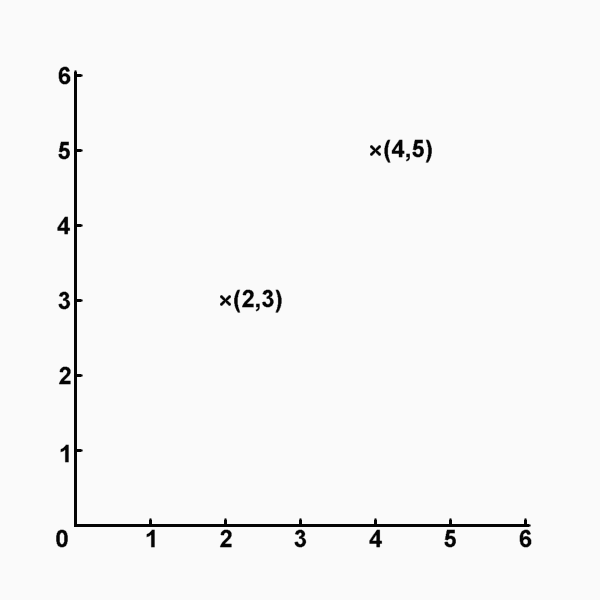
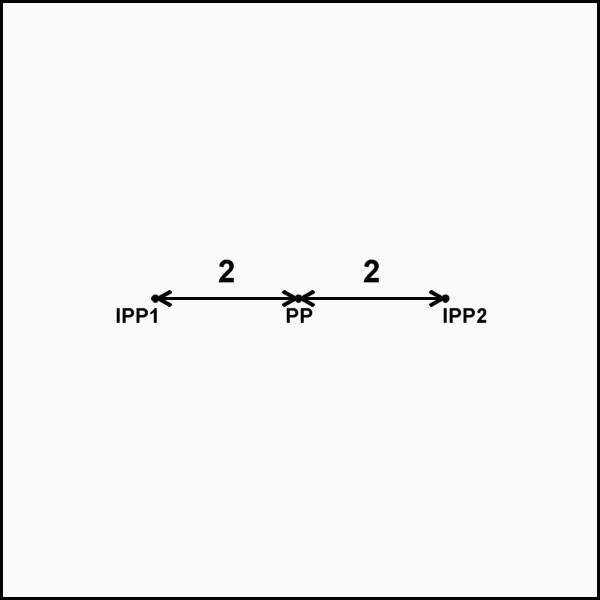
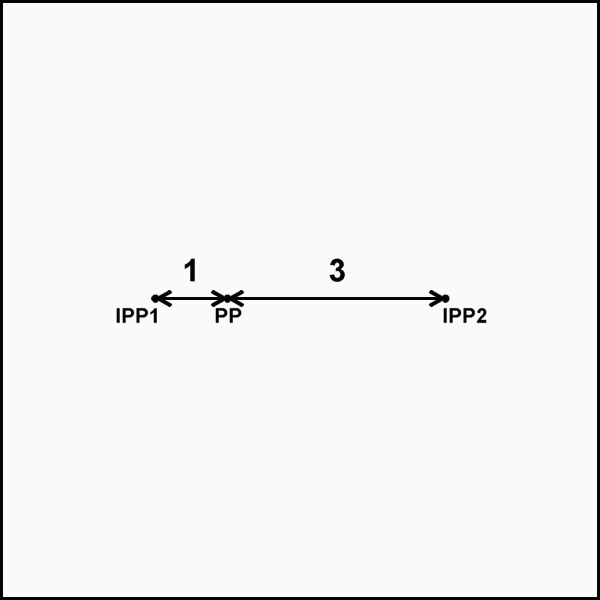
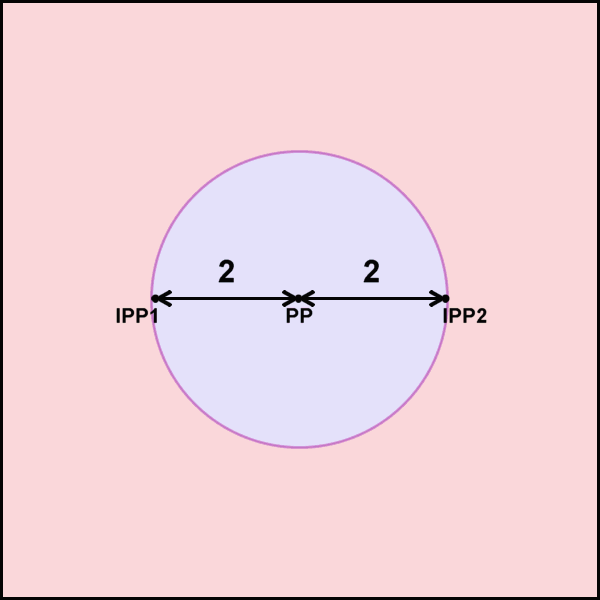
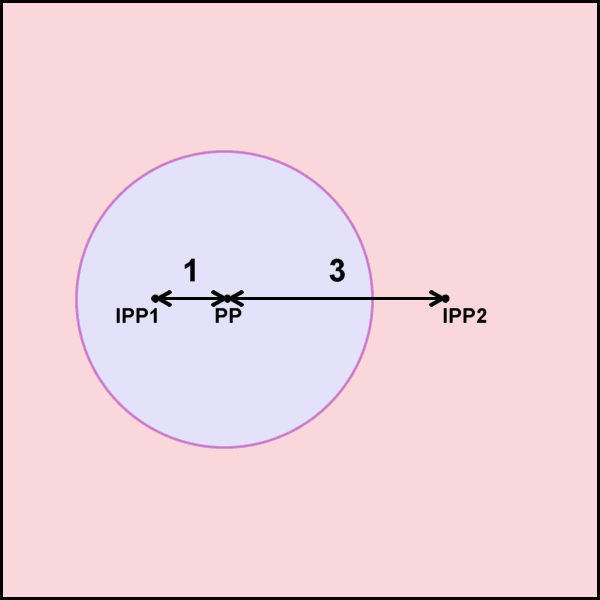
Well, I’ll be interested to see if the conceptual quantitative modeling adds anything to a purely conceptual model described in qualitative terms.
For instance you could say
1. People have their own individual expectations of government, but generally realize that the government cannot fulfill every personal expectation they have. There is a certain tolerance that most people have of even a government that disappoints them, as long as the government meets some of their expectations.
2. Some people become dissatisfied enough with the difference between their expectations of a government, and what their government actually provides, that they engage in violent behavior, including riots and murder.
One reason why the quantification may actually be less accurate is that for each individual, there is a unique distance from the ideal government that they are willing to tolerate. For example, a leftist might be willing to commit violent acts over a perception that not enough blacks hold political office, while a landowner might be willing to tolerate any government which allows him to keep some control over his land. In other words, the Discontented Zone could depend on the individual, and thus not be quantifiable as an average measure.
It’s too early in the series to consider a critique, so these are simply random thoughts for now.
Hello, El Ingles.
Your analysis, with all its letter-labeled concepts, looks like a reinvention, from first principles, of a theory of utility maximization that some economist probably developed in the 1800’s. (I suspect that the math would be simplified if you dealt not with the distance between two points, but with the square of the distance, like in finding the straight line that passes as close as possible to a set of points; see the graph at https://en.wikipedia.org/wiki/Least_squares .)
If we could figure out the right search string, we might find on the Internet the theory that you are reinventing. But your version might turn out to be more interesting.
Mark Spahn,
Why are you always such a downer? Just curious.
Hello, SyB.
I too am curious, about what makes you depressed to read what I wrote (“a downer”). I noted the similarity of El Ingles’s theory aborning to pioneering works of the past, and looked forward to its further development.
Your word “always” prompts me to wonder what previous comments of mine you consider “downers”. I do not consider myself a spreader of pessimism.
Fools rush in…
Let me be un-PC. SyB, whom I take to be female, admires El Ingles’ post, so identifies with him. Being female, she takes Mark Spahn’s (quite mild) criticism personally.
Having lit the blue touch paper, I’ll stand well clear!
“the ability of democratic government to deliver what are widely considered to be its natural fruits: political stability, civil order, and harmonious relationships between different groups in a society. ”
Only that many, especially in countries like Britain, do NOT expect such things from the government. Instead, they expect government to provide them with: housing, healthcare, education, money. In short, EVERYTHING. And with a more “ethnically-diverse” Britain, with many newcomers cheering on such a government (who they then can milk for such benefits), more ethnic diversity can increase the likelihood of “success”. The question of “who pays?” doesn’t matter – at best, it will be some “filthy rich” people anyway. At worst, the government will just take out some more debt – who cares if the country then becomes bankrupt?
The quality of such services may not matter that much either – it’s far more than they’re used to receiving in their home countries, after all…
I was thinking the same thing. People in western countries now think of stability as something to be taken for granted, and now see government as a way to get free stuff or, for the elites, a way to guarantee their positions without having to worry about competition.
People like people who are like themselves.
I appreciate all of the valuable time, thought and emotion that goes into these articles. But when I see that picture at the beginning of the article I only can think as far as “please just put me right there, right then, with a baseball bat”. I just want to physically fight back against this curse on humanity that is called islam. And looking at the statistics on the ‘religion of peace’ website just fuels that anger.
Yes to fantasies of quick revenge. We all have them.
But when El Ingles tried once to describe how people MIGHT all-too-humanly act as you say, he was called a racist by Pajamas Media and they excommunicated us. Some ‘conservative’ sites are prone to freaked-out reactive behavior that makes you wonder if there isn’t a Leftist heart beating under all the words.
They were terrified of having their “brand” spoiled by the sin of association with us and El Ingles.But when some critical mass of people decreed that it was okay to describe without having your words be prescription, they were able to catch up with El Ingles’ thinking. But that effort took them a few years. As the envelope is pushed, they move with it, but they never move beyond its limits first.
That’s the problem with having to depend on wealthy patrons for your existence. We just have y’all and y’all have proved to be sufficient, thankyouverymuch. I’ll bet our readers never considered themselves as “patrons”. Heh.
However, JBP, I empathize deeply with your desire to be there with a baseball bat. Not having enough testosterone in my system to be able to swing a bat effectively, I sure wouldn’t be averse to using a hat pin…if I still had any.
You Tube has a number of videos of anguished parents who shoot the perpetrators of their children’s grief. Here’s one I happened upon the other day:
https://www.youtube.com/watch?v=_PUE8fYxjq8
I wonder about the effect of this killing on his abused son; I’ll bet his main emotion is relief that the guy can never get at him again; that’s the main fear abused children have.
A very merciful court gave the father five years’ probation.
Pajamas media seems to be a classic party hack site used to stir up the internet savvy Republican. You’d think it’s 1980 with those folks. You wouldn’t get the impression our economy is dreadful and the jobs situation nightmarish or why the GOP elite are supporting amnesty.
All in all they are nice and safe and certainly won’t touch issues that may cause questioning in the minds of its readers.
OK, I’ll bite. I haven’t been here long enough to know what the code phrase “pajamas media” means.
Could it be late night shows? News from India/Pakistan, where tunics/long pants are standard wear?
Sorry, coming up empty for anything else. Help?
Pajamas Media, also known as PJMedia or PJM, was founded in 2005 by Roger Simon and Charles Johnson (of Little Green Footballs). It was originally set up as a consortium of bloggers under a single umbrella, and was designed to be an alternative to the MSM.
Dymphna and I joined it at the founding. We ran their ads and participated in various joint projects. But as PJM grew, it needed to keep its advertisers and big donors happy, which meant curbing or eliminating “racist” and “neo-fascist” elements such as Gates of Vienna. We were purged in April 2008 for publishing “Surrender, Genocide… or What?” by El Inglés. For more on what happened, see my post “On Being Cast into the Outer Darkness”.
Pajamas Media continued to grow after we were ejected. It has some good people — Wretchard is the best — but it has become a full corporate media entity, and resembles the MSM more than it originally intended, in my opinion.
Richard Fernandez’ Belmont Club is relegated to their back pages, but they are fully aware that he draws more traffic and more consistently than anyone else. Just look at this excellent essay on Hillary’s server. Watch where he goes with it:
http://pjmedia.com/richardfernandez/2015/03/27/the-return-of-the-jolly-roger/
Nobody, but nobody does the kind of analysis ->synthesis-> analysis like Wretchard (his old nic). A fine writer, a man of great integrity.
THey have other good people, too. I think Bill Whittle has spun off into his own fiefdom, Truth Revolt. It’s quite good. He’s being brought in under the umbrella of the David Horowitz Foundation, which is good for his finances, but sad from my point of view.
Sorry. This was supposed to be directed at Cynthia…*you*, dear Baron already know of my admiration for W’s work.
El Ingles, why couldn’t you perform an analysis in four dimensions? X, Y, Z, and point size. I’d hope that most folks on this site could comprehend the results. That type of data plot could be graphed in MS Excel fairly easily. The dissatisfaction value could then be a function of four variables and a three dimensional plot could be created. Except maybe the point size.